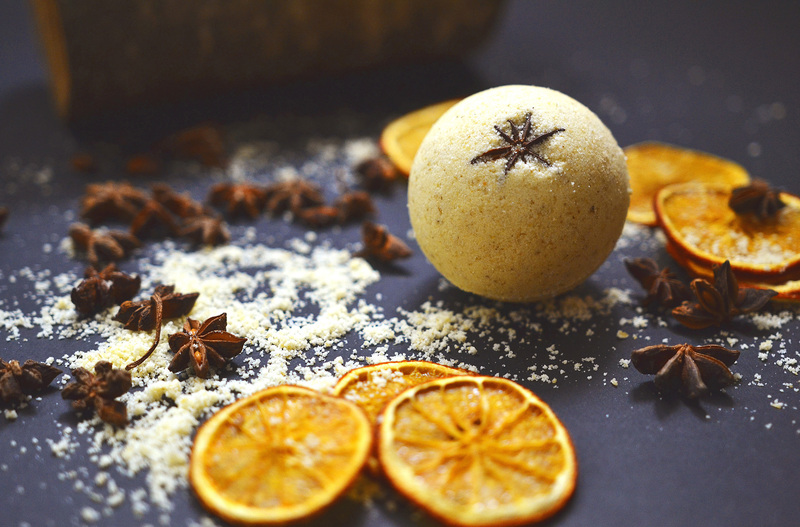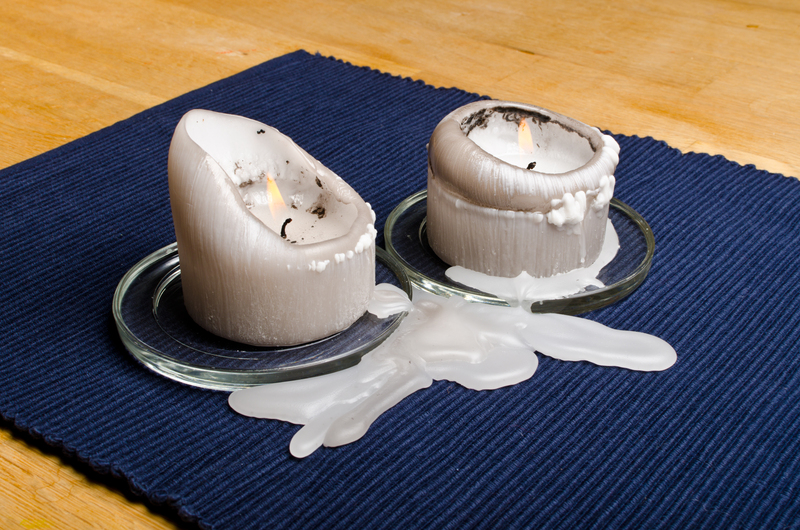Quick Guide: Clean Mould from Your Window Sills
Posted on 13/06/2025
Quick Guide: Clean Mould from Your Window Sills
If you've spotted unsightly black or green patches creeping along your window sills, you're not alone. Mould on window sills is a common problem in many homes, especially in areas prone to condensation or dampness. You might be tempted to ignore it, but learning how to clean mould from your window sills is essential for maintaining a healthy indoor environment and protecting your property. In this comprehensive guide, we'll walk you through effective methods to remove mould, prevent its return, and keep your window sills sparkling clean.

Why Does Mould Grow on Window Sills?
Mould thrives in moist environments. In the home, window sills can easily become breeding grounds for mould spores due to:
- Condensation - Fluctuations in indoor temperature cause water to collect on glass and adjacent surfaces, making window sills a hotspot for moisture.
- Poor ventilation - Stale air and excess humidity can linger around windows, especially in rooms like bathrooms and kitchens.
- Leaky windows - Damaged seals or frames allow rainwater to seep in and accumulate, encouraging fungal growth.
*Spotting green, black, or white mould on your window frame?* Don't panic. With the right tools and know-how, you can effectively remove window sill mould and prevent health risks associated with airborne spores.
Health Risks of Window Sill Mould
Before we dive into the steps to clean window sill mould, it's important to understand the possible health implications. Mould spores can have various adverse effects, especially on those with allergies, asthma, or compromised immune systems. Common health risks include:
- Respiratory irritation
- Allergic reactions
- Coughing and sneezing
- Eye and throat irritation
- Worsening of asthma symptoms
Therefore, promptly removing mould from window sills becomes more than a cosmetic concern--it's crucial for your well-being.
Essential Tools and Materials
Make your job easier by gathering all necessary supplies beforehand. You don't need fancy or expensive items--most can be found at home or your local supermarket. Here's your checklist for cleaning mould on window frames:
- Protective gloves
- Face mask (recommended to avoid inhaling spores)
- Safety goggles (optional, but helpful)
- Old clothes
- Soft-bristled brush or toothbrush
- Microfiber cloths or sponges
- Bucket of warm water
- Household detergent or mild soap
- White vinegar or hydrogen peroxide (for natural cleaning)
- Commercial mould remover (optional)
- Spray bottle
- Paper towels
- Bin liner for disposal
Step-by-Step: How to Clean Mould from Window Sills
Follow these simple worksafe steps to effectively remove mould from window sills and window frames. Remember, always work in a well-ventilated area and avoid spreading spores to unaffected spaces.
1. Prepare the Area and Yourself
- Open your windows for adequate ventilation.
- Put on your gloves, face mask, and goggles.
- Remove items from the window area to avoid contamination.
- Lay down paper towels or an old sheet to catch any debris.
2. Dust and Dry Clean
- Wipe the sill with a dry cloth to remove dust and loose mould.
- Immediately place dirty cloths or towels in a bin liner and seal it tightly.
3. Apply Your Cleaning Solution
- For a natural solution: Mix equal parts water and white vinegar or hydrogen peroxide in a spray bottle.
- Alternatively, use a store-bought mould spray following the manufacturer's instructions.
- Generously spray the affected area and let it sit for 10-15 minutes. This helps break down the mould and disinfect the surface.
4. Scrub the Mould Away
- Use a soft-bristled brush or old toothbrush to gently scrub affected areas.
- For stubborn patches, reapply the vinegar or cleaner and repeat scrubbing.
- *Take care not to damage paint or woodwork--be gentle but thorough.*
5. Rinse and Wipe
- Dip a clean cloth in warm soapy water and wipe down the window sill.
- Remove all cleaning residue and any remaining mould.
6. Dry Completely
- Pat the sill dry with a clean, absorbent towel.
- *Ensure the area is completely dry*--use a fan or heater if necessary. Moisture left behind invites mould's swift return.
7. Dispose of Waste Responsibly
- Seal dirty cloths, paper towels, and disposable gloves in a rubbish bag for safe disposal.
Natural Alternatives for Mould Removal
Interested in green cleaning methods? Here are some popular alternatives for removing mould from window frames naturally:
Baking Soda Paste
- Mix 1 tablespoon of baking soda with a few drops of water to form a paste.
- Apply to affected areas, allow it to sit, then scrub and rinse away.
Tea Tree Oil Solution
- Combine 1 teaspoon of tea tree oil with 1 cup of water in a spray bottle.
- Spray, let it sit, then wipe with a clean cloth.
*Note: Tea tree oil can be potent and has a distinct smell, but its antifungal properties make it a highly effective option for window mould removal.*
Preventing Mould on Window Sills
_Cleaning is only half the battle_. The real trick lies in prevention. Here are key strategies for preventing window sill mould from making an unwelcome comeback:
- Ventilation: Open windows daily to let moist air escape, especially in kitchens, bathrooms, and bedrooms.
- Dehumidifiers: Use portable dehumidifiers to reduce air humidity.
- Extractor Fans: Run extractor fans while cooking or bathing and for several minutes afterwards.
- Insulation: Seal window frames and sills to prevent water ingress and condensation buildup.
- Regular Cleaning: Wipe down window areas weekly to stop moisture accumulation.
- Monitor Humidity: Invest in a hygrometer--keep indoor humidity below 60%.
- Address Leaks Promptly: Repair any leaks in window seals or nearby guttering quickly.
Proactive maintenance pays off! The less moisture you allow to linger, the fewer chances there are for mould spores to take hold.
Special Considerations for Different Window Sill Materials
Window sills can be made from wood, PVC, metal, or stone. Tailor your cleaning method to protect the material:
Wooden Window Sills
- Use minimal water--excess moisture can damage wood.
- After cleaning, apply a wood-safe anti-mould solution or a thin coat of sealant as added protection.
uPVC and Vinyl Window Sills
- These are more resistant to moisture but can stain easily--always rinse off cleaning products promptly.
Stone or Concrete Sills
- Stone is porous; scrub gently and dry thoroughly.
Metal Window Sills
- Dry immediately after cleaning to prevent rust.
When to Call in the Professionals
Small mould spots and mild infestations are generally safe to handle yourself. However, seek professional help for window mould if:
- The mould covers a large area (over 1 square metre).
- You notice mould inside the walls or deep within the window frame.
- You have recurring problems despite your efforts.
- You, or someone in your household, experience severe allergic reactions or illness linked to the mould.
_Professional mould remediation services_ have the equipment, expertise, and safety measures to eradicate severe infestations and identify underlying causes--ensuring long-term solutions.

Frequently Asked Questions
1. Can I use bleach to clean mould off my window sills?
_While bleach kills mould on non-porous surfaces, vinegar or hydrogen peroxide is generally safer for home use, especially if kids or pets are present. Bleach can also discolor wood and isn't suitable for porous surfaces as it doesn't penetrate deeply enough to eradicate spores._
2. Will sunlight help to prevent window mould?
Yes! Mould hates sunlight. Keeping your windows open and letting in natural light helps keep window sills dry and inhospitable for mould growth.
3. How often should I check and clean my window sills?
*Inspect window sills every month*, especially during season changes or after heavy rain. Quick action minimizes mould's opportunity to spread.
4. What causes the black stains to keep returning?
Persistent stains signal ongoing moisture issues. Check for leaks, increase airflow, and follow the prevention tips above to break the cycle of regrowth.
Conclusion: Keep Window Sills Clean and Mould-Free
Dealing with mould on your window sills may seem daunting, but armed with the practical tips above, you can tackle it swiftly. _Remember: prompt cleaning, regular maintenance, and moisture prevention are your best allies._ Take a few minutes every week to check your windows, and you'll enjoy a mould-free, fresher, and healthier living space for years to come.
For continual guidance, bookmark this quick guide on cleaning mould from window sills and share it with friends and family who want to maintain a beautiful, safe home.
- Inspect & clean regularly
- Keep window areas dry
- Ventilate your space
- Never ignore mould - act fast!
Stay healthy and enjoy the clarity that comes with clean, bright, mould-free windows!




